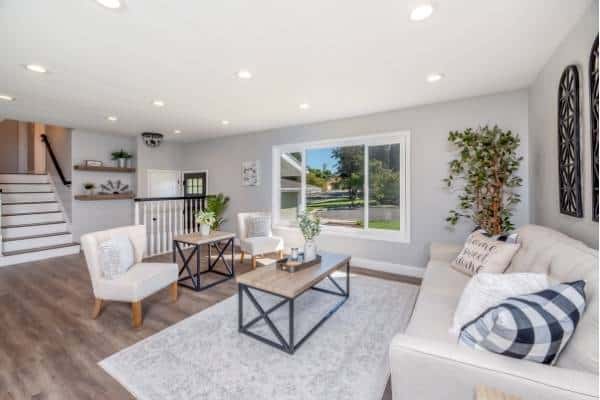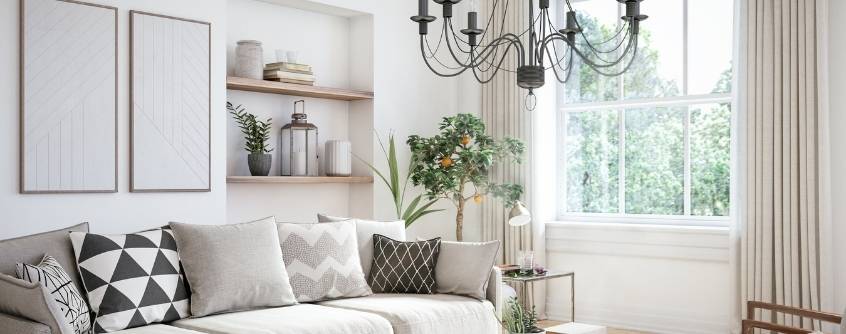Lighting can make a significant difference in how your house looks as well as how comfortable you will feel while staying at it.
For this reason, it is essential to take the lighting question seriously and choose the proper illumination for each room, depending on its purpose.
Whether your house is powered by one of the best inverter generators – see models – or gets the electricity from the neighborhood’s power lines is not of much importance.
Nowadays, you can light your home without electricity. Candles, oil lamps, and battery-powered lights are just a few examples of non-electric alternatives you might want to consider.
This article shares several expert tips on choosing the best lighting solutions for your house.
Apart from measuring the space and installing multiple levels of lighting, they include taking advantage of the options available (ambient, accent, or task lighting) and finding a balance between architectural and decorative lighting fixtures.
Continue reading to learn more about getting your house properly lit.
Understand the Difference Between Types of Lighting
Before you start looking for lighting fixtures, it is essential to understand the three main types of lighting: ambient, accent, and task lighting.
While both accent and task lighting are designed to highlight specific areas of your room, ambient lights are used to illuminate a room evenly and provide a general sense of comfort.
So, you must take these differences into account when deciding which type of light fixture to choose for each area of your house:
Ambient Lighting
Ambient lighting is typically used in spaces such as hallways or living rooms. It is also used in kitchens and dining areas to create an overall relaxing atmosphere.
These lights tend to create a softer light that doesn’t shine too brightly. This type of lighting will usually be placed on ceilings or walls, except for small lights mounted on dining room tables or kitchen islands.
Accent Lighting
Lighting fixtures used for accent lighting generally have a more elaborate design than those used for ambient lighting. As a result, you can use them as decorative pieces in your home even if they do not provide sufficient illumination on their own.
Task Lighting
Task lighting is intended to illuminate a particular area of a room. Its primary purpose is to help you perform a specific task that requires direct attention, such as reading a book or working at the desk in your study.
This type of lighting is usually found over the work surface or near the desk.
Because these lights are usually installed as wall sconces or table lamps, most of them come with adjustable heads and flexible necks so that you can direct the light as needed.
By using task lighting, you will be able to make the most of your living space and enjoy a more productive workday.
Measure the Space

Another thing to consider when choosing your lighting fixtures is the room’s actual size. A larger room will require more lighting than a smaller one, so the most important thing is to get it sufficiently illuminated.
The amount of light you need for a particular room depends on its size and purpose, as well as your general preferences.
Speaking in terms of personal preference, it is vital to note that most people prefer higher illumination levels in areas like the kitchen or the bathroom.
At the same time, lighting levels will be lower in spaces such as the bedroom or the sitting area. Because they are used less often, you won’t need bright light in these rooms.
As a general rule, you should have at least 10 to 20 lumens per square foot in your bedroom. On the other hand, areas like the kitchen and dining room require a more substantial level of lighting — around 70-80 lumens per square foot.
Use Multiple Levels of Lighting
When designing your room, it is essential to take advantage of all available lighting levels, including ambient, accent, and task lighting.
Ambient lighting should be designed to offer enough illumination for general purposes so that you can move around in the room comfortably.
Accent and task lighting should be used for highlighting specific areas of the room, such as a piece of furniture or a decorative item. For example, you can use task lighting for the desk area in your study and accent lighting for the sofa in your living room.
The main difference between ambient and accent lighting is that ambient lighting should be even, and its purpose is to create an overall relaxing atmosphere.
In contrast, accent lighting has a more purposeful function and is intended to direct attention to specific areas of a room.
Keep Your Lighting Fixtures Balanced
Another critical factor that influences how your house looks and feels is the type of lighting fixtures you choose for each room. The main distinction here is between architectural and decorative lighting fixtures.
Architectural lights are typically more functional than decorative ones, serving to illuminate a room evenly and efficiently. They are also more durable because they tend to be made from more robust materials such as steel or aluminum.
Decorative lighting fixtures can be used alongside architectural light fixtures, or they can be chosen to serve as statement pieces that offer a significant visual appeal.
These are typically fixtures made from glass or crystal, and they can offer a unique decorative touch and add a dramatic effect to your living space that helps complete the design of your home interior.
With some care, it is possible to find a balance between architectural and decorative lighting fixtures so that you get the best value for your money.
LEDs Are the Way to Go
When in doubt about what kind of lights to use for brightening up your space, choose LED lights. From chic and swanky strip lights to traditional floor lamps with a touch of modernity, your lighting options are practically endless.
In fact, Decorating your room with LED lights has advantages beyond aesthetics. A typical LED bulb consumes 75-90% less energy than halogen and incandescent bulbs, which is also why they are always cool to the touch.
Conclusion
There is no question that lighting plays a significant role in interior design. If it is poorly done, it can damage all the effort put into other design elements present in the room.
This is why it is essential to choose the best lighting fixtures for your house if you wish to create a welcoming and comfortable atmosphere.
As you research your options, make sure to read the specifications of each light and find out how many lumens they provide per square foot.
You should also take into account your personal preferences so that you can find a balance between functional and decorative lighting fixtures.

